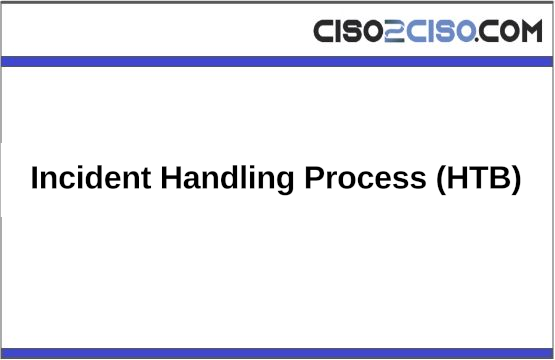The document titled “Incident Handling Process” provides a detailed framework for managing and responding to cybersecurity incidents in network environments. Here’s a comprehensive summary:
Introduction
The incident handling process outlines clear procedures for identifying, managing, and resolving security incidents within an organization’s IT infrastructure. The document distinguishes between events (general actions in a system) and incidents, which are events with negative consequences, such as data theft, unauthorized access, or malware infections.
Cyber Kill Chain
The document discusses the seven stages of a cyber attack known as the “Cyber Kill Chain”:
- Reconnaissance: The attacker gathers information about the target, using passive methods (social media, job ads) or active methods (scanning IP addresses or web applications).
- Weaponization: The attacker develops malware, making it lightweight and undetectable.
- Delivery: Methods like phishing emails or physical devices (e.g., USBs) are used to deliver the malware to the target.
- Exploitation: The malware or payload is triggered on the target system, allowing the attacker access.
- Installation: Techniques such as droppers, backdoors, and rootkits are used to maintain control over the compromised system.
- Command and Control: The attacker establishes remote access to the compromised machine.
- Actions: The attacker achieves their goal, whether that’s data exfiltration, deploying ransomware, or gaining further access.
Incident Handling Process Overview
Incident handling is a cyclical process, divided into two primary activities:
- Investigation: Identifying the “patient zero” and tracing the tools or malware used by the attacker. This includes documenting compromised systems and actions taken.
- Recovery: Developing and executing a recovery plan to restore normal operations. A report detailing the incident’s cause, cost, and lessons learned is issued.
Stages of the Incident Handling Process
- Preparation: Establishing an organization’s incident-handling capability, including:
- Endpoint and server hardening.
- Multi-factor authentication and privileged access management.
- Training the workforce on security awareness.
- Ensuring skilled incident handlers, clear policies, and necessary tools (e.g., forensic workstations, network analysis tools, write blockers).
- Detection & Analysis: Monitoring the network to detect threats through logs, sensors, threat hunting, and third-party notifications. Detection is categorized into multiple layers (network perimeter, internal network, endpoints, applications). Incident severity is assessed by understanding the impact, systems affected, and potential business consequences.
- Containment, Eradication, & Recovery:
- Containment: The spread of the incident is halted through short-term measures like isolating affected systems, and long-term actions such as applying patches and changing passwords.
- Eradication: Removing the root cause of the incident by deleting malware, rebuilding systems, and ensuring system hardening.
- Recovery: Systems are restored to normal operation with enhanced monitoring to prevent a recurrence.
- Post-Incident Activity:
- A thorough report of the incident is created, detailing the timeline, team performance, and preventive measures for the future. This stage also emphasizes the importance of lessons learned to improve future response strategies.
Tools and Measures
The document lists several tools required for handling incidents, such as:
- Forensic workstations, log analysis tools, network capture devices, and hard drives for imaging.
- Jump bags (prepacked incident-handling tools) are recommended for rapid response.
- Indicators of Compromise (IOCs), which can be IP addresses, file hashes, or network traffic patterns, play a vital role in detecting and investigating incidents.
- It also highlights protective measures like DMARC (to block phishing), endpoint hardening standards, and multi-factor authentication.
Communication During Incidents
Communication regarding an incident should be kept confidential and occur through secure channels. The document stresses that adversaries could be internal or may have control over communication systems.
Purple Team Exercises and Continuous Improvement
The document advocates for “Purple Team” exercises, where the red (attackers) and blue (defenders) teams collaborate to enhance the organization’s security by identifying vulnerabilities and improving detection and response capabilities.
This comprehensive incident handling process ensures that organizations are prepared to prevent, detect, respond to, and recover from security incidents, while continuously improving their security posture.
Views: 186




















































